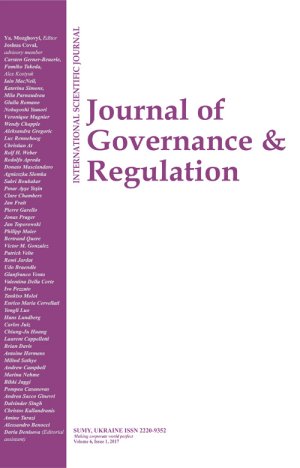
VOLATILITY EXPLOSIONS AND PRICE PREDICTION: CASE OF OIL MARKET
Download This Article
This work is licensed under a Creative Commons Attribution-NonCommercial 4.0 International License.
Abstract
This paper explores behavior of oil market after volatility explosions (days with abnormally high price volatility). It examines possible price patterns and whether they create exploitable profit opportunities from trading. A number of statistical tests both parametrical (t-test, ANOVA, regression analysis with dummy variables) and non-parametrical (Mann–Whitney U test) confirm presence of price patterns after volatility explosions: the next day price changes in both directions are bigger than after “normal” days. Oil prices (case of Brent) for the period from January 2000 till the end of 2016 (for the trading robot analysis the period is 2014-2016) are analyzed in this paper. To incorporate transactional costs in results a trading robot approach is used. Testing of two trading strategies based on detected anomalies shows that a strategy based on counter-movements after volatility explosions produces profits and the one based on so called “inertia anomaly” does not generate profits in oil market. An important result of this paper is that presence of statistical anomaly does not necessarily means anomaly in price behavior and inconsistency with the Efficient Market Hypothesis.
Keywords: Efficient Market Hypothesis, Volatility Explosion, Anomaly, Overreaction Hypothesis, Abnormal Returns, Contrarian Strategy, Trading Strategy, Trading Robot
Received: 30.04.2017
Accepted: 07.06.2017
How to cite this paper: Plastun, A., & Bashlai, S. (2017). Volatility explosions and price prediction: case of oil market. Journal of Governance & Regulation, 6(2), 48-60. https://doi.org/10.22495/jgr_v6_i2_p5



















